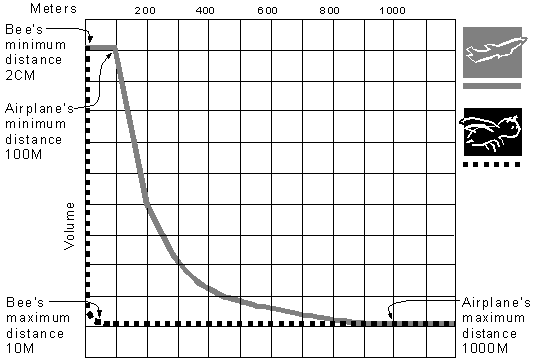
As a listener approaches a sound source, the sound gets louder. Past a certain point, however, it isn't reasonable for the volume to continue to increase; either the maximum (zero) has been reached, or the nature of the sound source imposes a logical limit. This is the minimum distance for the sound source. Similarly, the maximum distance for a sound source is the distance beyond which the sound does not get any quieter.
The minimum distance is especially useful when an application must compensate for the difference in absolute volume levels of different sounds. Although a jet engine is much louder than a bee, for example, for practical reasons these sounds must be recorded at similar absolute volumes (16-bit audio doesn't have enough room to accommodate such different volume levels). An application might use a minimum distance of 100 meters for the jet engine and 2 centimeters for the bee. With these settings, the jet engine would be at half volume when the listener was 200 meters away, but the bee would be at half volume when the listener was 4 centimeters away. This concept is shown in the following illustration:
